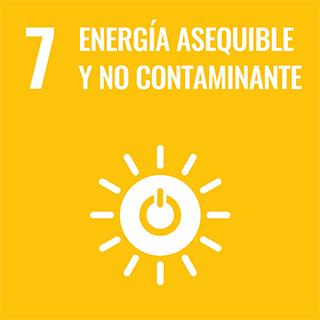
Indexat a
Llicència i ús
Impacte en els Objectius de Desenvolupament Sostenible (ODS)

Anàlisi d'autories institucional
Prado Rujas IAutor o coautorCalculating Heavy-Duty truck energy and fuel consumption using correlation formulas derived from vecto simulations
Publicat a:Sae Technical Papers. 2019-April (April): - 2019-04-02 2019-April(April), DOI: 10.4271/2019-01-1278
Autors: Tansini A; Fontaras G; Ciuffo B; Millo F; Prado Rujas I; Zacharof N
Afiliacions
Resum
The Vehicle Energy Consumption calculation Tool (VECTO) is used in Europe for calculating standardised energy consumption and CO2 emissions from Heavy-Duty Trucks (HDTs) for certification purposes. The tool requires detailed vehicle technical specifications and a series of component efficiency maps, which are difficult to retrieve for those that are outside of the manufacturing industry. In the context of quantifying HDT CO2 emissions, the Joint Research Centre (JRC) of the European Commission received VECTO simulation data of the 2016 vehicle fleet from the vehicle manufacturers. In previous work, this simulation data has been normalised to compensate for differences and issues in the quality of the input data used to run the simulations. This work, which is a continuation of the previous exercise, focuses on the deeper meaning of the data received to understand the factors contributing to energy and fuel consumption. Fuel efficiency distributions and energy breakdown figures were derived from the data and are presented in this work. Correlation formulas were produced to calculate the energy loss contributions of individual components and resistances (air drag, rolling resistance, axle losses, gearbox losses, etc.) over the Regional Delivery and Long Haul cycles, given a limited number of input parameters such as vehicle characteristics and average component efficiencies. Default values and meaningful ranges of variation of these parameters obtained from the data of the fleet are also reported in this work. The importance of air drag and rolling resistance losses are highlighted since these losses account for about 70% of the energy consumed downstream the engine. Finally, based on the correlation formulas to calculate the individual energy losses, a method is presented that calculates the final energy consumption and CO2 emissions for all the regulated HDTs classes and that does not rely on the use of VECTO.
Paraules clau
Indicis de qualitat
Impacte bibliomètric. Anàlisi de la contribució i canal de difusió
El treball ha estat publicat a la revista Sae Technical Papers a causa de la seva progressió i el bon impacte que ha aconseguit en els últims anys, segons l'agència Scopus (SJR), s'ha convertit en una referència en el seu camp. A l'any de publicació del treball, 2019, es trobava a la posició , aconseguint així situar-se com a revista Q2 (Segundo Cuartil), en la categoria Safety, Risk, Reliability and Quality.
Des d'una perspectiva relativa, i atenent a l'indicador de impacte normalitzat calculat a partir del Field Citation Ratio (FCR) de la font Dimensions, proporciona un valor de: 1.9, el que indica que, comparat amb treballs en la mateixa disciplina i en el mateix any de publicació, el situa com un treball citat per sobre de la mitjana. (font consultada: Dimensions Aug 2025)
Concretament, i atenent a les diferents agències d'indexació, aquest treball ha acumulat, fins a la data 2025-08-18, el següent nombre de cites:
- Scopus: 9
- Open Alex: 11
